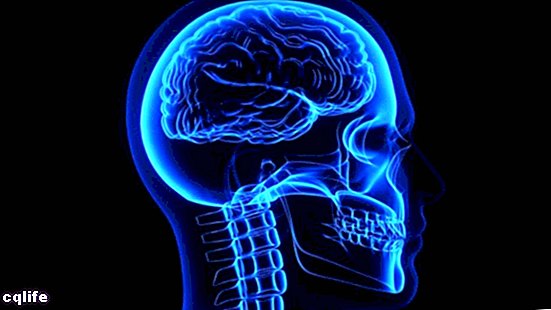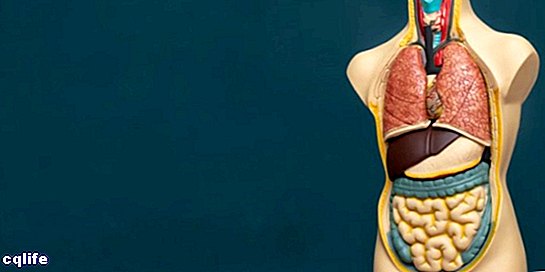We explain what are the parts of the human body and what are the characteristics of the head, trunk and limbs.
The different parts of the human body operate simultaneously and interrelated.What are the parts of the human body?
The Body human is something that we often take for granted, since we have had it from birth, and sometimes we do not recognize the wonderful complexity of its structure. In fact, the human body harbors different systems of organs and fabrics that operate simultaneously and interrelated to sustain life as we know it.
These body systems are several and very different, and they are distributed more or less symmetrically in the body. That is why an anatomical study of the human body, that is, a study of its shape and structure, in order to classify its different parts and organize them in a logical way, must initially recognize its three fundamental segments: the head, the trunk and the body. limbs.
These three fundamental portions are very important, each in its own way and in its proper measure, and comprise the organs and tissues necessary to, in a coordinated way, perform the different functions of which our body is capable. Let's see each one separately below.
Head

The head is the fundamental segment of our body, not only from a physiological point of view, but also from a social point of view.
In it is the governing body of the entire body, the brain, which would become the computing and operations center that regulates both conscious and unconscious life. In addition, there are located four of our five senses: the view, the hearing, the taste and the smell, with direct nerve channels to the brain.
Therefore, in the head we can identify with the naked eye:
- The eyes, responsible for vision. They are covered by the eyelids, where the eyelashes are, and above the eyebrows.
- The ears and ears, in charge of hearing.
- The mouth, responsible for taste and speech, and the main route of entry of organic matter into our body. The lips cover it.
- The nose, responsible for smell and air intake during breathing.
- The cheeks, chin and forehead.
On the inside of the head, hidden from view, are:
- The brain, made up of gray matter and the substances that cover it.
- The cerebellum, the lower back portion of the brain, just above the entrance to the spinal cord.
- The skull, a set of bones that cover and protect the brain, and to which the jaw, the bone that supports the teeth, is articulated.
Trunk

The intermediate segment of the body is called the trunk, to which the head is connected through the neck: the rest of our internal organs are contained and distributed in it, and it is the place where the extremities are attached.
It is composed, in turn, of two distinguishable parts:
- The thorax or torso, the upper region near the neck.
- The abdomen, the lower region near the genitals.
Both portions are separated by the diaphragm, one of the main muscles of the body.
What is perceived by the naked eye of the trunk may not seem like much compared to everything it contains: from top to bottom we can see the neck, the chest (and female breasts), the belly (where the navel is, the rest of the body). umbilical cord) and the belly, at the end of which are the external genitalia: the male penis and testes, and the female vulva. Seen from behind, we will barely have a back and tailbone.
On the other hand, an internal look at the trunk will reveal an immensity of organs, tissues and ducts, the most important, from top to bottom, being the following:
- The trachea and esophagus, tubes that run through the neck and that come from the head to their respective internal organs, transporting air Y food respectively.
- The heart, located in the left sector of the chest, a very robust muscle of continuous activity, responsible for pumping blood throughout the circulatory system.
- The lungs, one on each side, which are large sacs where the air enters the body, where oxygen is extracted to enter the blood.
- The stomach, an organ responsible for secreting acids to break down food into its essential nutrients, which will be absorbed later.
- The liver, the organ in charge of filtering the blood and manufacturing essential substances for digestion.
- The intestine, the organ where digestion takes place. It is a very long tube that connects the stomach and the opening to the anus, along which an infinity of specialized villi absorb from the organic material the substances we need to nourish ourselves, leaving only the useless matter for later disposal in the form of feces. Finally, the intestine is divided into two: the small intestine and the large intestine.
- The kidneys, responsible for receiving the main waste material from the metabolism, which is ammonia and other similar compounds, with which urine is produced to expel them from the body, since if it accumulates inside it, it would be fatal.
- The bladder, a kind of sac in which the urine produced by the kidneys will accumulate, to be later discharged through a specialized tube that ends in the urethra.
- In the case of women, there are also the internal genitalia: the ovaries in which numerous hormones are produced and the ovules, female sex cells; the fallopian tubes through which these eggs descend into the uterus, which is the place where they wait to be fertilized during reproduction. The posterior region of the latter organ, the vagina, which serves to allow the penis to enter during the reproduction.
- In the case of men, there are no internal genitalia, but there is an organ responsible for producing substances necessary for reproduction, which is the prostate.
- The vertebral column, a long tower of ossicles that runs down the back and connects the nape to the end of the back. Within them flows the spinal cord, a very delicate nervous tissue that governs the functions of the extremities and the muscles of the torso.
- Protecting most of the organs of the torso is a set of bones known as ribs, as well as the sternum and others that serve as the axis of the skeleton.
Extremities

Finally, the extremities are the extensions of the body that allow movement and conscious activity. They are distributed symmetrically on the sides of the trunk, and can be differentiated into two categories:
- The upper extremities, which are the arms, located below the shoulders, and made up of arms, forearms and hands, and in the latter, the fingers: five in each, around a central area called the palm.
- The lower extremities, which are the legs, located on the sides of the belly and attached to the hips, made up of the buttocks, thighs, calves and feet, at the end of which are, again, five toes in each , around an elongated central area known as the plant.
